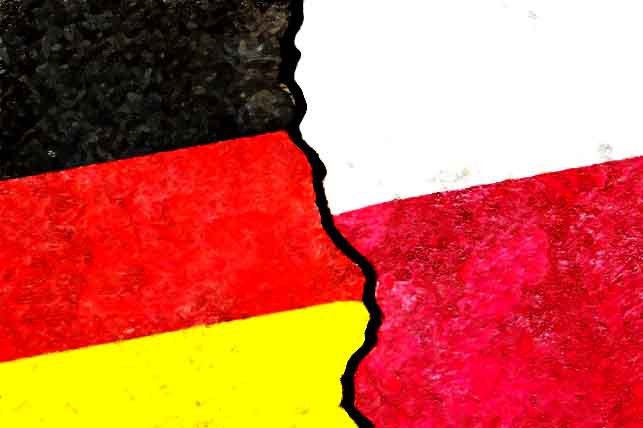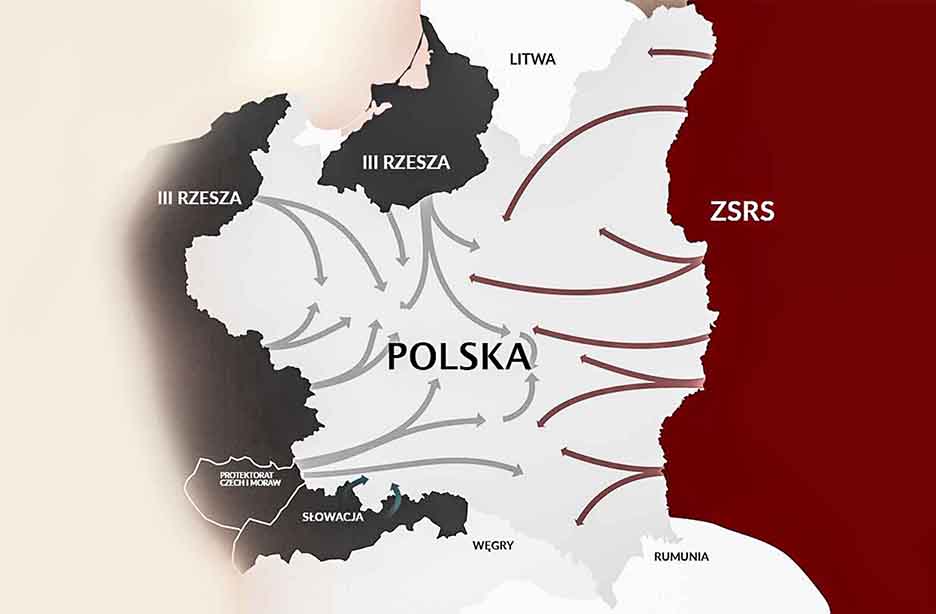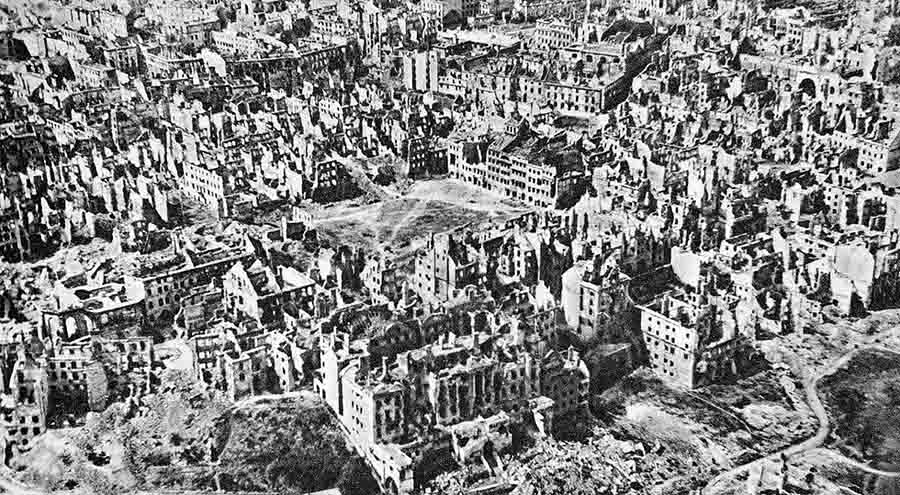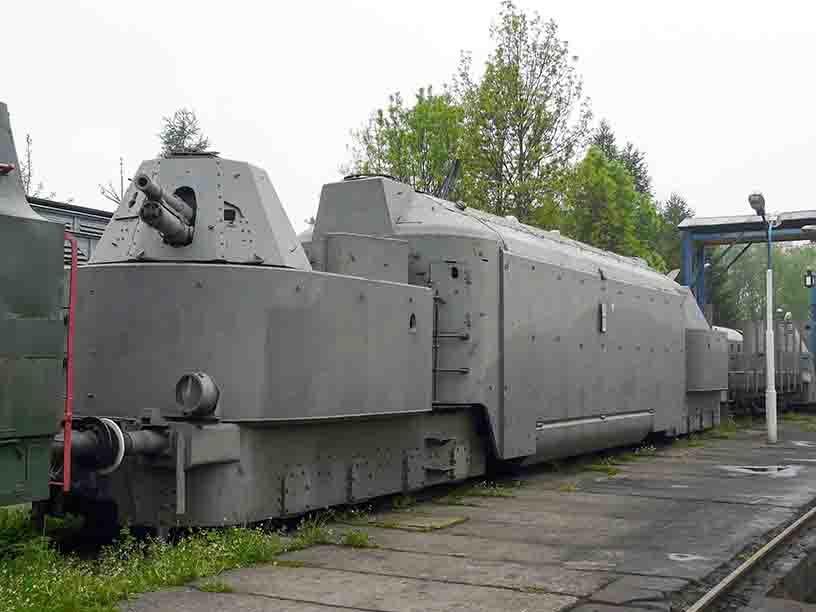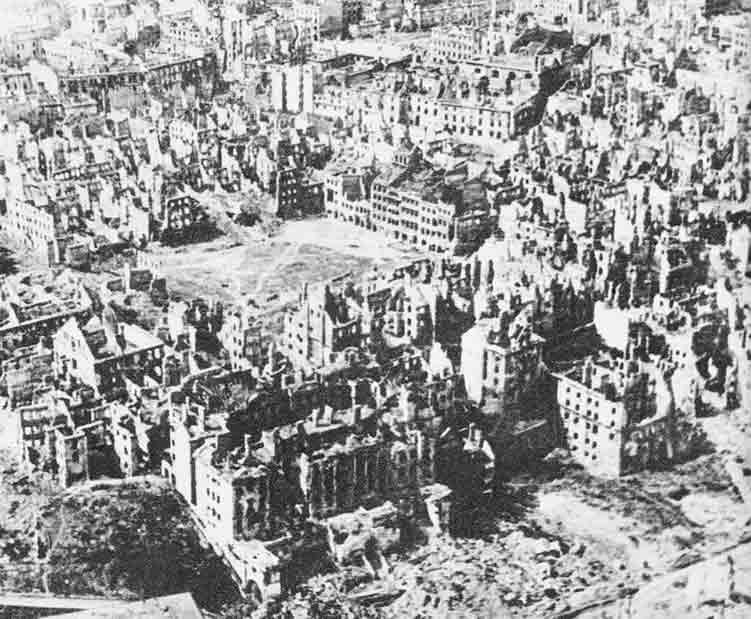On April 30, 1946, a unique train decorated with American flags entered the Kraków station. In 10 cars, there were elements of the Veit Stoss altar, the other 26 cars were filled with other works of art looted by the Germans during World War II, including Lady with an Ermine by Leonardo Da Vinci. Although it was not the only transport with Polish artifacts after the capitulation of Germany, most of the cultural goods taken from Poland were lost forever. It is estimated that Poland lost over 500,000 works of art during the war, and over 20 million valuable volumes.

Wit Stwosz (Veit Stoss) altar in Krakow (Source: Wikipedia)
The destruction of cultural property was one of the priority goals of the Nazis, it was supposed to break the cultural backbone of the Polish nation. That is why, 77 years ago, the ceremony at the Krakow railway station had not only material significance — it was an important and uplifting signal that Poland is recovering from the fall after the German occupation, and has a chance to rebuild at least some elements of its former glory.
A long way from Nuremberg
The head of transport was prof. Karol Estreicher, the same one who initiated the actions of hiding and securing Polish works of art in 1939, and — during the war — ran the Cultural Loss Recovery Office at the Ministry of Congress Works in London. In the convoy that set out from Nuremberg, he was accompanied by 3 officers and 12 American soldiers. As he recalled years later, the journey was not pleasant or safe: “The train was constantly harassed by Russian checkpoints. Russian soldiers approach every station and start harassing these Americans: what are they carrying, where is the consent of the Soviet authorities, in short, it was a constant problem. The Americans quite skilfully shot in the air a few times when some Soviet guards tried to get into the train.”

Lady with an Ermine by Leonardo da Vinci (Source: Wikipedia)
The train traveled from Nuremberg via Prague, Moravian Ostrava, was greeted by the Polish authorities in Zebrzydowice, then headed to Krakow. For its arrival, the station was decorated with Polish and American flags, and representatives of the authorities, scientists, and members of the clergy who had survived the war were waiting on the platform. In addition to the elements of the Wit Stwosz altar packed in 107 wooden boxes, and Leonardo da Vinci's masterpiece, the priceless 15th-century Baltazar Behem Codex looted from the Jagiellonian Library and many artefacts from Wawel Castle also returned, among others.
The most famous Polish altar was officially handed over to the parish priest of St. Mary's Church, Fr. dr. Ferdynand Machay. However, it returned to its place only 11 years later — it took the political "thaw" of 1956 for it to be allowed to move from Wawel.
Make Poles a nation of farmhands
Prof. Estreicher mentioned in his memoirs that the Germans were carefully and methodically preparing for the war against Polish culture. Already a few years before war's outbreak, under the pretext of scientific inquiries, German art historians visited Polish museums, researching the collections. That is why the looting action began almost immediately after the German troops entered Polish territory, and was carried out according to a pre-planned scenario. Already on September 23, 1939, Himmler established a special unit headed by Peter Paulsen, which was supposed to "secure the German character" of Polish works of art. A second such group was formed soon after. For the looters, the St. Mary's Altar was particularly important — because Veit Stoss was born and died in Nuremberg — so elements of his Krakow work were deposited in this city, and — as the scientists note — were provided with the best possible storage conditions in a bunker under one of the castles.
The action of transporting Polish works of art was so efficient and dynamic that at the end of 1942 Hans Frank informed Hitler about "securing" 90% of Polish art assemblages and collections. It is estimated that Poland lost over 500,000 works of art during the war and over 20 million valuable volumes. There is no doubt, however, that the scale of looting was much greater.
Looting and deliberate destruction of Polishness
Although some of the stolen objects were recovered in the years 1945–1952, this represents a small percentage of the actual losses suffered by Polish art and culture. The list of the most valuable works that have been lost in Germany includes, among others: "Portrait of a young man" by Raphael, "Self-portrait" by Annibale Carracci, "The Battle of Carnival with Lent" by Pieter Breughel the Younger or "Madonna and Child" called Głogowska by Lucas Cranach the Elder. Only the National Museum in Krakow lost 1,163 objects during the war, and St. Mary's Church - one of the most valuable treasures of sacral art in Poland - paintings by Michael Lancz from Kitzingen and Hans Suess from Kulmbach. Information on stolen works is collected on the website dzielautracone.gov.pl by the Department of Restitution of Cultural Property of the Ministry of Culture and National Heritage.
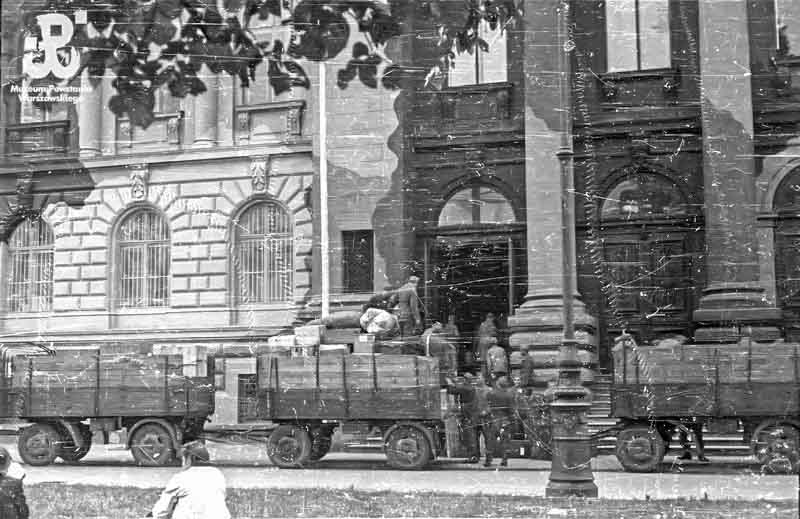
Theft of works of art from Zachęta in Warsaw, 1940 (Source: Wikipedia)
Poland conducts intensive activities aimed at recovering looted works. Many of them are auctioned from time to time, sometimes, as in the case of the 16th-century copperplate engraving by Johann Saenredam "Portrait of the painter Johann von Aachen" or a figurine from the 4th century BC stolen together with the collection of Józef Chynowski, the exhibiting galleries or private individuals give them to Polish museologists. Law enforcement agencies are sometimes involved. Many works are returned as a result of purchases made by the Polish government in antiquarian markets, especially in Berlin and Vienna.
In recent years, over half a thousand works of art recognized as Polish war losses have been recovered, restitution cases are being conducted in several countries around the world.
Losses difficult to estimate
As noted by Mirosław Kłusek and Tomasz Luterek, the authors of the report devoted to the losses of the Republic of Poland in the area of cultural goods published on September 1, 2022, Polish diplomacy has never officially presented the issue of full compensation for cultural losses to the German side. Immediately after the war, the Allied countries opposed it, and Poland also focused more on economic issues. In 1995, an attempt was made for the first time to talk about formalizing the search for and repurchasing the plundered works of art, but the German side did not comment on this. As the authors of the report write, this is a consequence of the policy of German diplomacy, which avoids any discussion on compensation for damages and losses in Polish culture. "The burnt manuscript of Jan Kochanowski's work is just shredded paper and ink, but from the point of view of Polish culture, it is invaluable,” said Dr. Tomasz Luterek in an interview after the report was published.
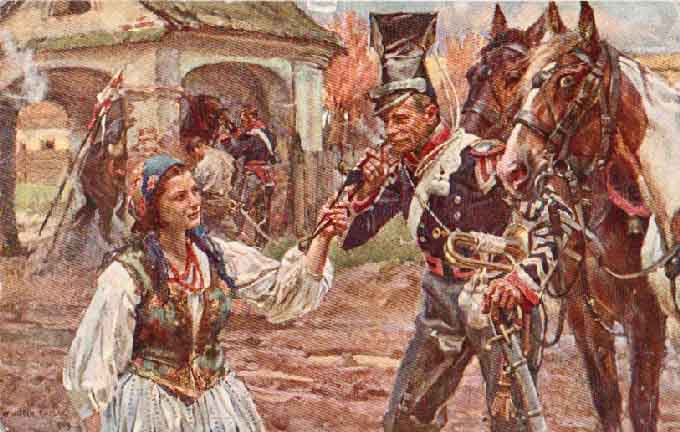
Wojciech Kossak's Trumpeter and Blacksmith Lady (never recovered) (Source: Wikipedia)
The issue of a full valuation of the losses incurred in cultural property is also impossible for other reasons - many museum institutions lost their inventories during the war, some were deliberately destroyed by the occupant. It is impossible to estimate the losses in museums that were completely destroyed, nor is it possible to fully restore the collections owned by the Jewish community before the war, and the reconstruction of private collections is similarly difficult. "All estimates and calculations are therefore only indicative and oscillate around the lower limit of possible losses incurred by Poland in cultural and art assets" - write Mirosław Kłusek and Tomasz Luterek.
The report on the losses suffered by Poland as a result of German aggression and occupation during World War II is the result of the work of a parliamentary team appointed to assess the scale of compensation due to Poland from Germany. 33 eminent historians, economists, archivists, experts and lawyers worked on the report. According to their calculations, the total amount of Poland's losses is PLN 6 trillion 220 billion 609 million (USD 1,529,831 million). The total loss in cultural goods amounts to PLN 1 trillion 200 billion (USD 295,115 million).
Translation from Polish by Andrew Woźniewicz.





